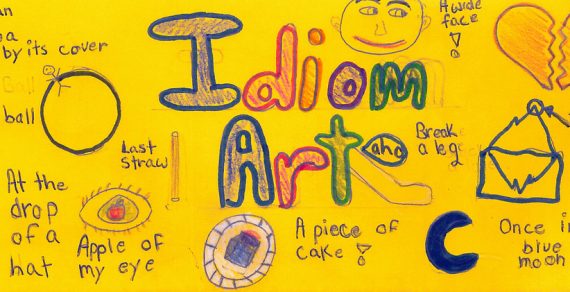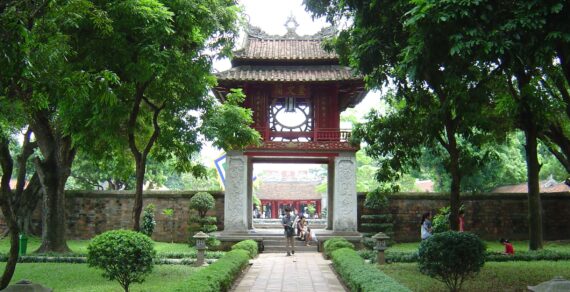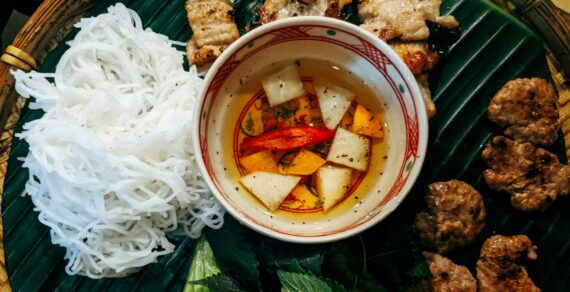Vietnam’s ethnic groups represent a remarkable diversity of cultures, languages, and traditions that contribute to the rich tapestry of Vietnamese society. Here are some thoughts on Vietnam’s ethnic groups:
- Cultural Diversity: The wide array of ethnic groups in Vietnam showcases the country’s cultural richness. Each group has its own unique customs, rituals, music, dance, attire, and culinary traditions, which add depth and variety to Vietnamese culture as a whole.
- Language and Linguistic Diversity: The ethnic groups in Vietnam speak a variety of languages and dialects, reflecting their distinct cultural identities and histories. This linguistic diversity is an integral part of Vietnam’s cultural heritage and contributes to the country’s multilingual landscape.
- Traditional Practices: Many of Vietnam’s ethnic groups have preserved their traditional ways of life, including agricultural practices, handicrafts, and spiritual beliefs. These traditions are often deeply rooted in the natural environment and are passed down through generations, contributing to the cultural heritage of the country.
- Challenges and Opportunities: While Vietnam’s ethnic diversity is a source of cultural richness, it also presents challenges in terms of social cohesion, economic development, and political representation. Efforts to promote inclusivity, respect cultural diversity, and ensure equal opportunities for all ethnic groups are essential for the country’s social harmony and sustainable development.
- Cultural Exchange and Integration: Despite their differences, Vietnam’s ethnic groups have a long history of cultural exchange and interaction, leading to the enrichment and evolution of their respective cultures. This cultural exchange fosters mutual understanding, tolerance, and solidarity among different ethnic communities.
- Government Policies: The Vietnamese government has implemented various policies to promote the rights and well-being of ethnic minorities, including affirmative action programs, support for cultural preservation initiatives, and infrastructure development in ethnic minority areas. However, challenges remain in terms of ensuring equal access to education, healthcare, and economic opportunities for all ethnic groups.
Overall, Vietnam’s ethnic groups are a vibrant and integral part of the country’s identity, contributing to its cultural diversity, social fabric, and national unity. Efforts to celebrate, preserve, and promote the diverse heritage of these ethnic groups are crucial for fostering inclusivity, harmony, and sustainable development in Vietnam.
Here’s a list of the 54 officially recognized ethnic groups in Vietnam along with brief descriptions:
- Kinh (Viet):
- The largest ethnic group in Vietnam, predominantly inhabiting lowland regions.
- Culturally dominant, they have a significant influence on Vietnamese society.
- Tày:
- One of the largest ethnic minorities, primarily residing in northern mountainous regions.
- Known for their rich cultural heritage, traditional music, and festivals.
- Thái:
- Distributed throughout northern Vietnam, with significant populations in mountainous provinces.
- Distinct language and traditional customs, including unique weaving techniques and stilt house architecture.
- Mường:
- Closely related to the Kinh ethnic group, inhabiting mountainous regions of north-central Vietnam.
- Share many cultural similarities with the Kinh people.
- Khơ Mú:
- Also known as Xơ Đăng or Bru-Vân Kiều, residing in the central highlands of Vietnam.
- Distinct culture, language, and traditional customs, including weaving and basketry.
- Hmong:
- Dispersed throughout northern mountainous provinces and central highlands.
- Known for vibrant traditional clothing, silver jewelry, and rich oral traditions.
- Dao:
- Inhabit various mountainous regions of northern Vietnam.
- Have their own language and are known for intricate embroidery, silverwork, and traditional herbal medicine.
- Chăm:
- Primarily residing in central coastal regions, particularly Ninh Thuận and Bình Thuận provinces.
- Rich cultural heritage influenced by Hinduism and Islam, including unique architectural styles and traditional crafts.
- Gia Rai:
- Indigenous people of the central highlands, known for their agriculture and animist beliefs.
- Distinctive traditional attire and cultural practices.
- Lao:
- Also known as Laotians or Tai Dam, residing in northern mountainous provinces.
- Culturally similar to the Thai ethnic group, with their own language and traditions.
- Xơ Đăng:
- Primarily located in the central highlands, particularly in Kon Tum and Gia Lai provinces.
- Known for their traditional festivals, music, and unique cultural practices.
- Mông:
- Inhabit northern mountainous regions, with populations in Lào Cai, Hà Giang, and Cao Bằng provinces.
- Known for their distinctive clothing, silverwork, and vibrant festivals.
- Khơ Me:
- Residing in the central highlands, particularly in Kon Tum and Gia Lai provinces.
- Practice shifting cultivation and have a rich oral tradition.
- X’Tiêng:
- Indigenous group of the central highlands, particularly in Đắk Lắk Province.
- Known for their unique culture, including gong music and traditional rituals.
- Bru-Vân Kiều:
- Primarily residing in Quảng Bình and Quảng Trị provinces.
- Engage in agriculture and traditional handicrafts, including bamboo weaving.
- Cơ Ho:
- Inhabit the central highlands, particularly in Đắk Nông Province.
- Known for their distinctive culture and traditional festivals.
- Tà Ôi:
- Reside in Thừa Thiên-Huế Province in central Vietnam.
- Known for their traditional crafts, including pottery and weaving.
- Cống:
- Inhabit the central highlands, particularly in Đắk Lắk Province.
- Known for their traditional slash-and-burn agriculture and distinctive culture.
- Chứt:
- Primarily located in Quảng Bình Province.
- Known for their unique language and cultural practices.
- Mạ:
- Inhabit northern mountainous regions, particularly in Hà Giang Province.
- Engage in agriculture and handicrafts, including weaving and embroidery.
- Pà Thẻn:
- Reside in northern mountainous regions, particularly in Lai Châu and Sơn La provinces.
- Known for their distinctive clothing and cultural practices.
- La Chí:
- Primarily located in Quảng Bình Province.
- Practice slash-and-burn agriculture and have a unique cultural heritage.
- La Ha:
- Inhabit northern mountainous regions, particularly in Lai Châu Province.
- Known for their traditional farming techniques and distinctive cultural practices.
- Co Lao:
- Reside in northern mountainous regions, particularly in Hà Giang and Cao Bằng provinces.
- Engage in agriculture and have their own language and cultural traditions.
- La Hủ:
- Inhabit northern mountainous regions, particularly in Lai Châu and Sơn La provinces.
- Known for their traditional clothing and cultural practices.
- Xinh Mun:
- Primarily located in Quảng Bình and Quảng Trị provinces.
- Engage in agriculture and have a unique cultural heritage.
- Hrê:
- Inhabit the central highlands, particularly in Quảng Ngãi and Kon Tum provinces.
- Known for their traditional farming techniques and distinctive culture.
- Rơ Măm:
- Reside in central highlands, particularly in Quảng Nam Province.
- Practice shifting cultivation and have their own language and traditions.
- Giáy:
- Inhabit northern mountainous regions, particularly in Lào Cai and Lai Châu provinces.
- Known for their traditional clothing and cultural practices.
- Dao Đỏ:
- Primarily located in northern mountainous regions, particularly in Lào Cai and Yên Bái provinces.
- Practice slash-and-burn agriculture and have their own language and traditions.
- Dao Đỏ:
- Reside in northern mountainous regions, particularly in Lào Cai and Yên Bái provinces.
- Practice slash-and-burn agriculture and have their own language and traditions.
- Giẻ Triêng:
- Inhabit central highlands, particularly in Quảng Nam and Quảng Ngãi provinces.
- Known for their distinctive culture and traditional crafts.
- M’Nông:
- Primarily located in Đắk Nông Province in the central highlands.
- Engage in agriculture and have their own language and cultural practices.
- Chơ Ro:
- Inhabit Đắk Lắk Province in the central highlands.
- Known for their traditional agriculture and unique cultural heritage.
- Xơ Đăng:
- Reside in central highlands, particularly in Kon Tum and Gia Lai provinces.
- Practice shifting cultivation and have their own language and traditions.
- Mạng:
- Inhabit northern mountainous regions, particularly in Lào Cai and Hà Giang provinces.
- Engage in agriculture and traditional crafts, including weaving and basketry.
- Brau:
- Primarily located in Đắk Nông Province in the central highlands.
- Known for their distinctive culture, including gong music and traditional rituals.
- Ơ Đu:
- Inhabit northern mountainous regions, particularly in Lai Châu Province.
- Practice shifting cultivation and have their own language and cultural traditions.
- Tà Y:
- Reside in northern mountainous regions, particularly in Lào Cai and Yên Bái provinces.
- Known for their traditional clothing and cultural practices.
- Grơ Ko:
- Inhabit central highlands, particularly in Gia Lai and Kon Tum provinces.
- Engage in agriculture and have a unique cultural heritage.
- Ươ Đà:
- Primarily located in central highlands, particularly in Quảng Nam Province.
- Practice shifting cultivation and have their own language and traditions.
- Ta Ôi:
- Reside in Thừa Thiên-Huế Province in central Vietnam.
- Known for their traditional crafts, including pottery and weaving.
- Co Tu:
- Inhabit central highlands, particularly in Quảng Nam and Thừa Thiên-Huế provinces.
- Known for their distinctive culture, including traditional festivals and crafts.
- Cho Ro:
- Primarily located in Đắk Lắk Province in the central highlands.
- Engage in agriculture and have their own language and cultural traditions.
- Kháng:
- Inhabit northern mountainous regions, particularly in Lai Châu Province.
- Practice shifting cultivation and have their own language and cultural practices.
- Xinh Mun:
- Reside in northern mountainous regions, particularly in Quảng Bình and Quảng Trị provinces.
- Engage in agriculture and have a unique cultural heritage.
- Hà Nhì:
- Inhabit northern mountainous regions, particularly in Lai Châu and Lào Cai provinces.
- Known for their traditional clothing and cultural practices.
- Chứt:
- Primarily located in Quảng Bình Province.
- Practice slash-and-burn agriculture and have a unique cultural heritage.
- Lự:
- Inhabit northern mountainous regions, particularly in Lào Cai and Hà Giang provinces.
- Engage in agriculture and traditional crafts, including weaving and embroidery.
- Lô Lô:
- Primarily located in northern mountainous regions, particularly in Hà Giang Province.
- Known for their distinctive clothing and cultural practices.
- Mảng:
- Reside in northern mountainous regions, particularly in Lào Cai and Hà Giang provinces.
- Engage in agriculture and traditional crafts, including weaving and basketry.
- Pà Thẻn:
- Inhabit northern mountainous regions, particularly in Lai Châu and Sơn La provinces.
- Known for their traditional clothing and cultural practices.
- La Hủ:
- Primarily located in Lai Châu and Sơn La provinces.
- Practice shifting cultivation and have their own language and cultural traditions.
- Lachi:
- Inhabit northern mountainous regions, particularly in Lai Châu and Lào Cai provinces.
- Known for their traditional clothing and cultural practices.
These are the officially recognized ethnic groups in Vietnam, each contributing to the country’s rich cultural diversity. Each group has its own language, traditions, and way of life, contributing to the vibrant mosaic of Vietnamese society.



